With the constantly connected nature of our society today, young people have instant access to social media likes and dislikes, never ending selfies, extracurricular events, and daily tragedy in the news. These are just a handful of examples of the stressors our young people are exposed to, regularly contributing to elevated levels of anxiety, feelings of depression, loneliness, and lack of self-worth and confidence on a day-to-day basis. As a result, our learning environments today need to be equipped to mitigate such behaviors. Design solutions that create community connections and environments to facilitate a sense of choice, pride, and belonging have never been more critical to social emotional development. A variety of articles have been circulating recently on this topic as we are all beginning to understand the urgency of overall wellness of our children as they navigate life and learning.
To survive and thrive, humans need to socially interact and connect with each other in environment and society.
Churchill’s famous quote, “We shape our buildings, thereafter they shape us,” emphasized the word “us.” It is important to take a step back to understand what it means to be “us.”? To survive and thrive, humans need to socially interact and connect with each other in environment and society. We are deeply influenced by our surroundings and have an automatic (non-conscious) response to shapes, patterns, and colors. Interestingly, our sense of aesthetics is also rooted in our evolution. (Ann Sussman Justin Hollander).
Fundamentally, our schools have direct contact with more than 95% of our nation’s young children aged five to 17 years, for about eight hours per day and up to 13 critical years of their social, psychological, physical, and intellectual development. We know that when we design for the whole child, we all benefit with lifelong learners who are more engaged both socially and emotionally. We know today that social emotional health is integral to learning, and our built environments affect the mind, how we feel and behave, reinforcing the impact of safety, social equity, sensory elements, nature, physical activity, and environmental integrity on health and wellness. To understand how our evolution can inform us on designing for overall health and wellness we will look at five core tenets of design:
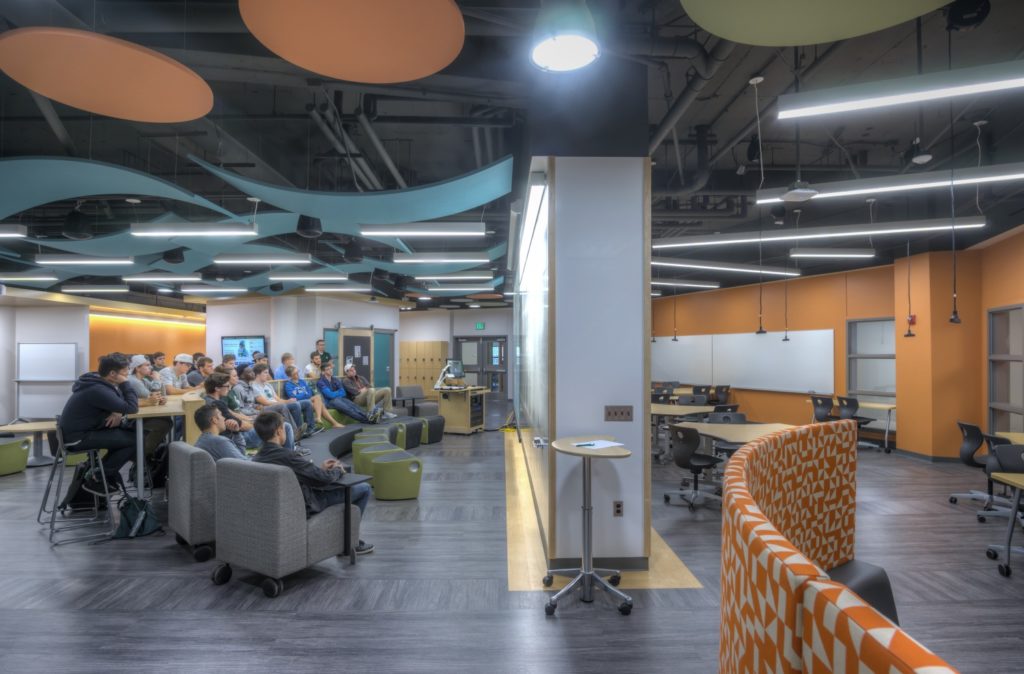
Social animal – social emotional connections and community
Just as human beings have a basic need for food and shelter, we also have a basic need to belong which is deeply rooted in our evolution. For humans to survive, we need to connect with each other. The desire to be in a loving relationship, or to fit in at school, or avoid rejection or loss is all part of being human. Learning environments and schools are just a microcosm of our larger society. Designing a rich ecosystem of spaces that empower all students, while providing autonomy and community, is crucial for social emotional wellbeing. Creating layered choices, like an active collaborative space or a quiet reading nook, can empower students to experience their environment in a way that is comfortable for them. Universal design elements that are inclusive and equitable reinforce equality, a sense of belonging, and feeling safe all contribute to students becoming their true selves, which in turn impacts and influences their emotions and behavior in the environment. Creating a smaller micro-community where “everyone knows your name,” can be seen, supported, and engaged, can help with self-esteem and promote a sense of security and belonging.
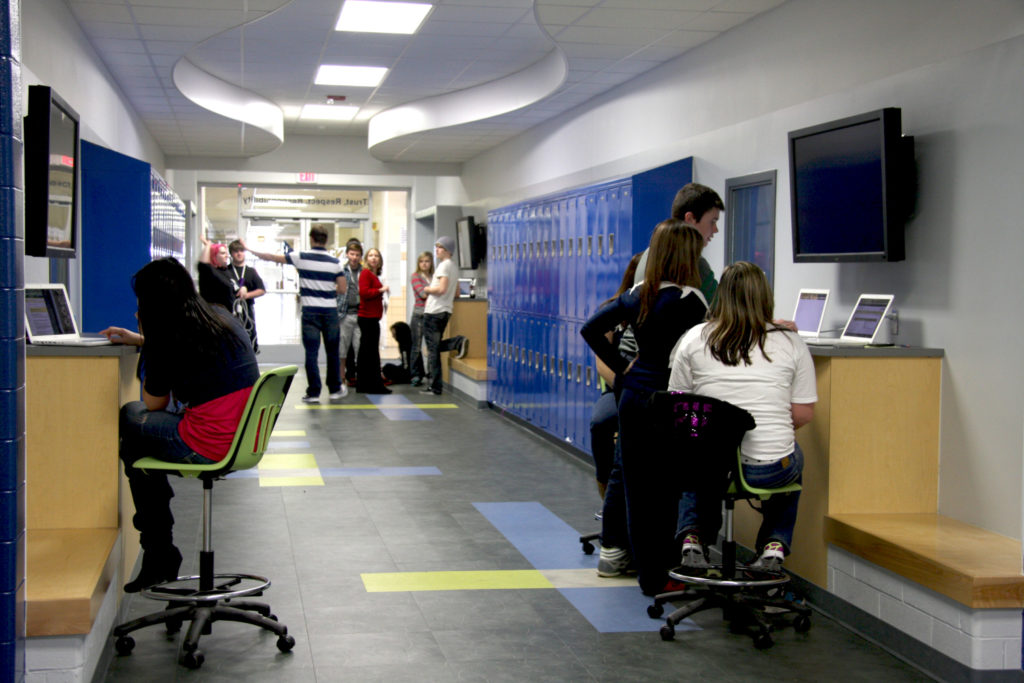
Edges Matter – Thigmotaxis
Humans, like animals, behave differently when inside a room than when outdoors. Studies in urban design document human pedestrians gravitate to the sides of walls in urban settings, emphasizing the need for buildings to have continuous lines and edges around us to make us feel safe – similar to a being in a room (Botton, 2006). Human pedestrians are “wall hugging” species. The more designers are aware of thigmotaxis as a billion-year-old biological trait the better they will understand why well-defined corridor streets encourage our walking (Sussman & Hollander, 2015)Various other studies in cities and at Disney theme parks have all concluded that humans tend to hug the wall and will only venture into the main open space if there is something special or specific happening and will revert back to the walls eventually. Our behavior is informed by evolution; danger lurked in the open areas, and staying out of sight along the perimeter provided better safety. Defining the perimeter of the building and outdoor spaces surrounding the perimeter are equally important. Centrally located collaborative spaces and social areas with circulation around the perimeter and adjacencies with continuous perimeters that optimally define and organize spaces to our predispositions as humans are preferable.
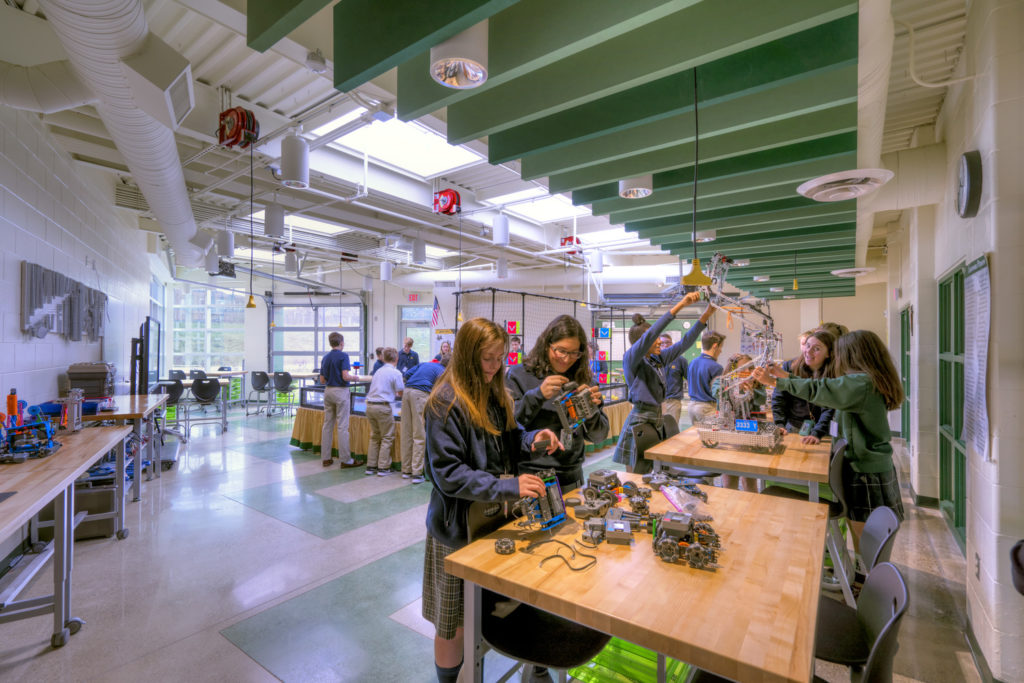
Sensory – Universal and Experiential Design
Sensory design is all about experiencing a space with all our senses. Humans are social and emotional beings where emotions play a critical role in influencing what and how much we learn. Sensory design that engages all your senses can solidify our connections by creating a sense of place for all; it is about how the environment makes you feel. Sensory experiences coupled with experiential design can give students the autonomy to connect, communicate, and experience their environment. Research suggests that SEL is key to building emotional resilience in individuals. This research is in line with emerging literature from neuroscience study, which encourages a ‘whole-brain learning approach,’ suggesting the brain, being the seat of our learning experiences, can be trained in cognitive intelligence, it can also be trained in emotional intelligence. (Chatterjee Singh & Duraiappah, 2020)
Using materials and textures intentionally to evoke familiarity or designing rich experiential experiences gives learners choice and opportunity, making them comfortable and engaged. Providing layered choices and autonomy on scale can encourage specific behaviors such as creating intimate nooks with views of outside for quiet reading or reflection. Designing to be inclusive and equitable can be powerful for all users, giving them a sense of belonging and safety to show their true selves. Universal design, on the other hand, removes barriers to promote a welcoming environment which connects individuals as a whole.
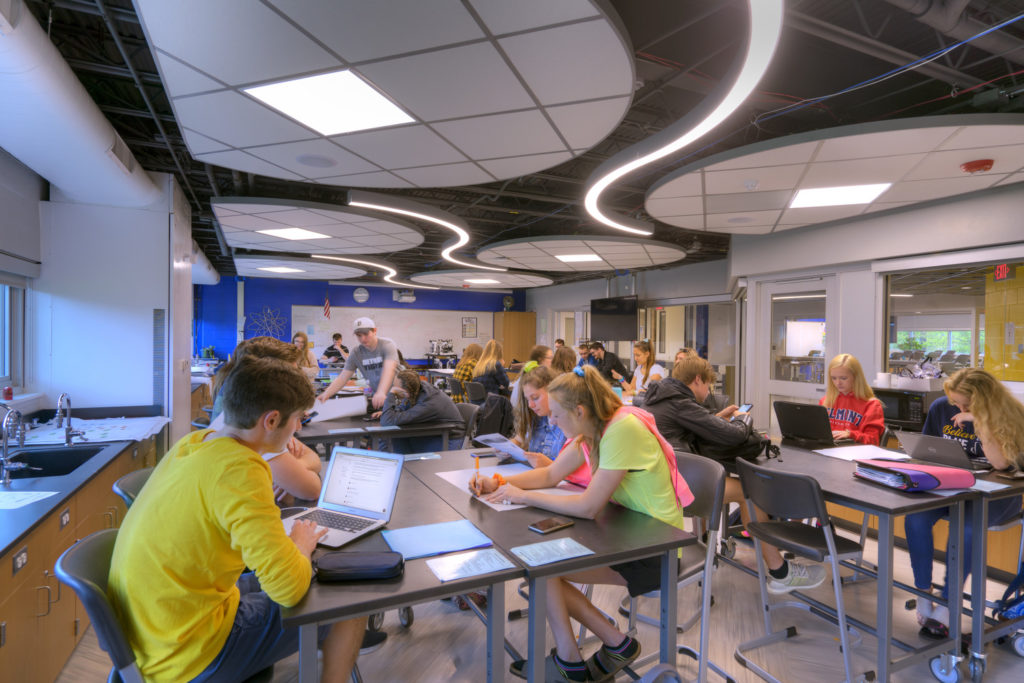
Patterns and Face sensing
The importance of perceiving and connecting to faces in our lives is ingrained in our evolution. Recent studies in neuroscience have reinforced the human need for face sensing; the brain formulates its own patterns, drawing on prior experiences. In fact, our brain registers faces before simple objects. Of the five predominant human senses of smell, hearing, taste, touch and vision, the brain, as found in neuroscience, favors vision. Faces engage emotions and memory. To this point, facial expressions are used all around us in advertising, building architecture, art, etc.
As we continue to evaluate optimal learning environments, providing visual connections through transparency can reinforce this need for facial sensing. Visual connections that celebrate each individual as themselves in the built environment can have a profound impact on creating a sense of place and belonging, thereby impacting overall health and wellness for our learners and educators. Understanding that we perceive and think collectively demonstrates humans are pervasively integrated into their environments. It is important we understand that we do not touch, see, or hear passively; we feel, look, and listen actively. As we conceptualize learning environments, these correlations make the design of learning spaces so much more crucial to the overall health and wellbeing of our children.
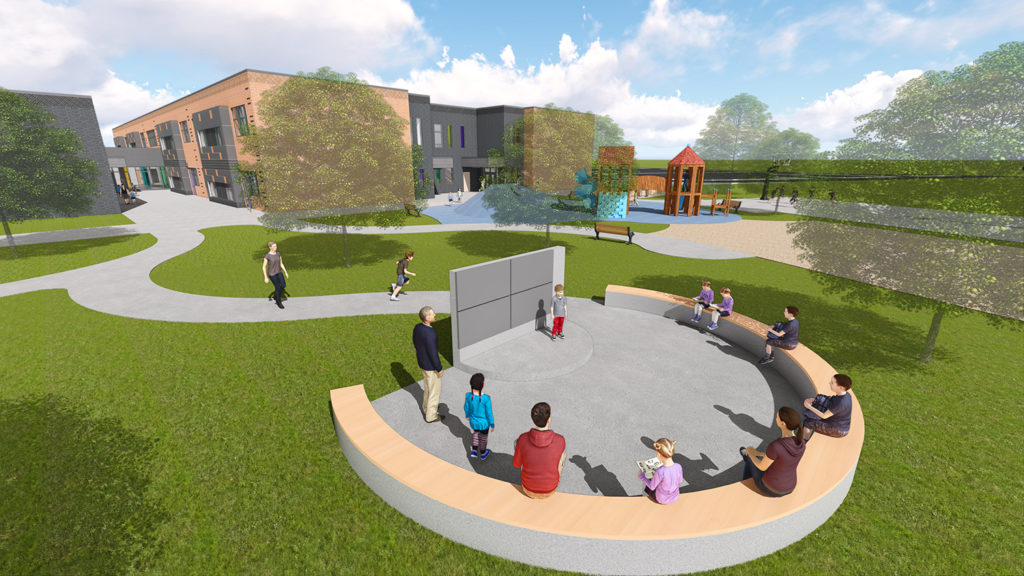
Nature – Biophilia and wellbeing
Biophilia is the inherent human inclination to affiliate with nature. We are more at ease in the outdoors given that we developed from hunter-gatherers and spent nearly 99% of our time outdoors. Also knowing that our brain function shuts down when we are stressed, and connections to nature and natural day lighting can heal and recover us, makes the need for connections to nature in the built environment crucial for our overall wellbeing and health. Intentional design with consideration to the natural habitat and bringing the outdoors inside can balance these needs. Educational environments designed for wellbeing basically nurture belonging, provide nature-full places for both social and communal activities, support emotional needs, and evoke a sense of awe. Studies in healthcare found that inpatient rooms with views of nature helped patients heal faster than those without these views. As we think about educational facilities and learning environments, outdoor learning spaces, like nature trails or outdoor classrooms, can stimulate the senses by experiencing sunshine or a cool breeze and promote engagement. Natural light and natural ventilation can help children feel more connected and comfortable and help with the circadian cycle.
As discussed throughout this article, a human centered design approach informed by our evolution can impact all users, big or small. Given that we spend most of our time indoors today, our built environments need to intuitively fit our subconscious expectations, activate our senses and facilitate emotional connections. Using evolutionary neuroscience and research to guide us, we can create more human-centered spaces that are enduring and sustainable for all, contributing to social emotional health and wellbeing.
Bibliography
Auernhammer, J., Zallio, M., Domingo, L., & Leifer, L. (2022). Facets of Human Centered Design: Evolution of designing by, with and for people. Redwood City: Stanford University Press.
Botton, A. d. (2006). The Architecture of Happiness. New York: Pantheon.
Chatterjee Singh, N., & Duraiappah, A. (2020). Rethinking learning: a review of social and emotional learning frameworks for education systems. New Delhi: UNESCO MGIEP.
Kellert, S., & Calebrese, E. F. (2015). The Practice of Biophilic Design. Retrieved from Biophilic Design: https://www.biophilic-design.com/_files/ugd/21459d_81ccb84caf6d4bee8195f9b5af92d8f4.pdf
Robischon, D. A., Ley, G., Harwood, P., & Randall, R. (2021). How buildings teach kindness. Retrieved from Education Market Association Essentials: https://essentials.edmarket.org/2020/01/how-buildings-teach-kindness-social-emotional-learning-across-generations-in-neuroscience-and-architecture/
Schaad, K. (2019, June 14). Fostering Connection: Design Strategies to create community based learning environments. Retrieved from KSS Architects: https://kssarchitects.com/intersections/blog/2019/06/fostering-connection-design-strategies-create-community-based-learning
Sussman, A., & Hollander, J. B. (2015). Designing for how we respond to the built environment. Cognitive Architecture.
Wilson, E. O., & Kellert, S. R. (1993). The Biophilia Hypothesis. Washington, DC: Island.

